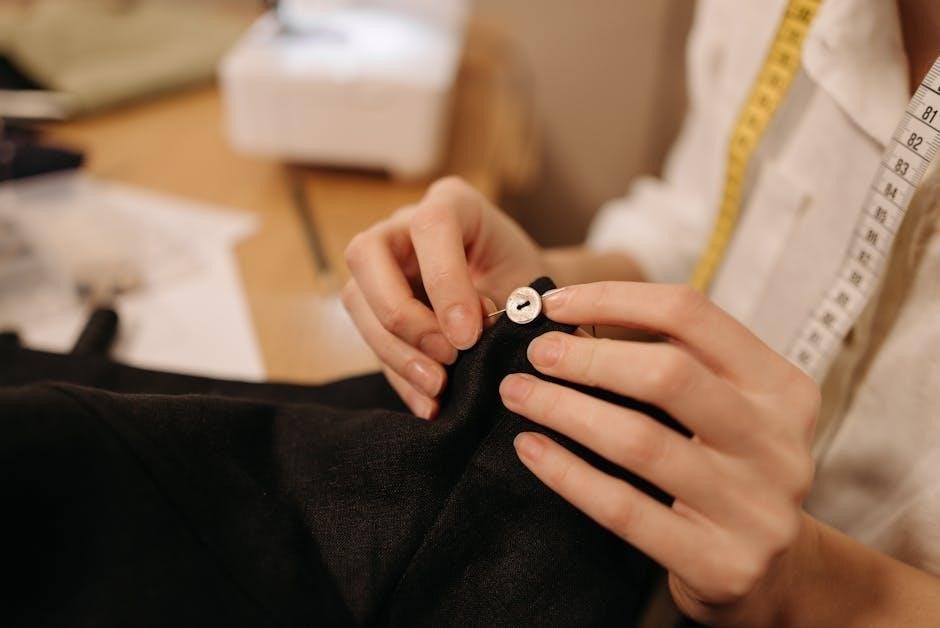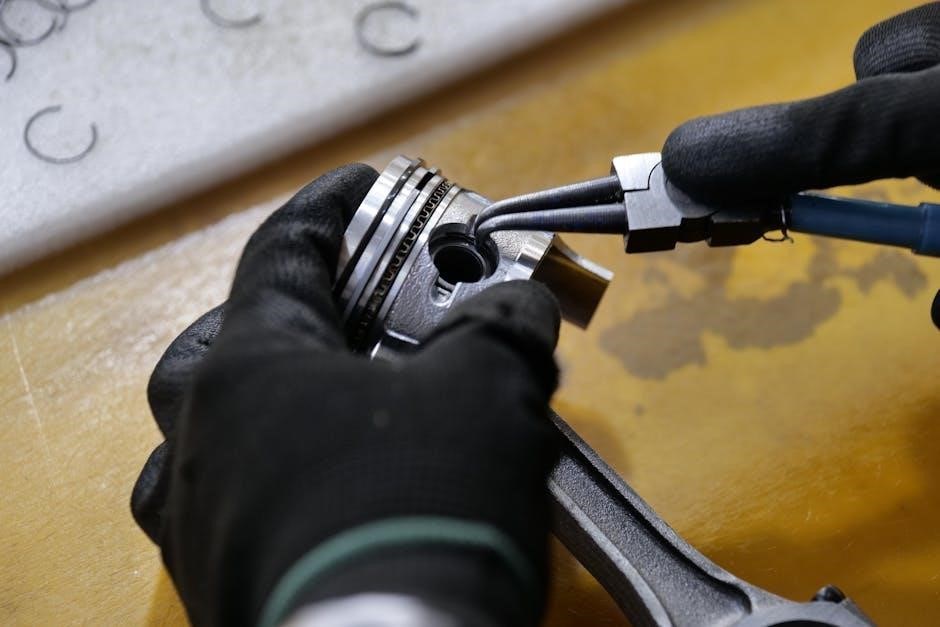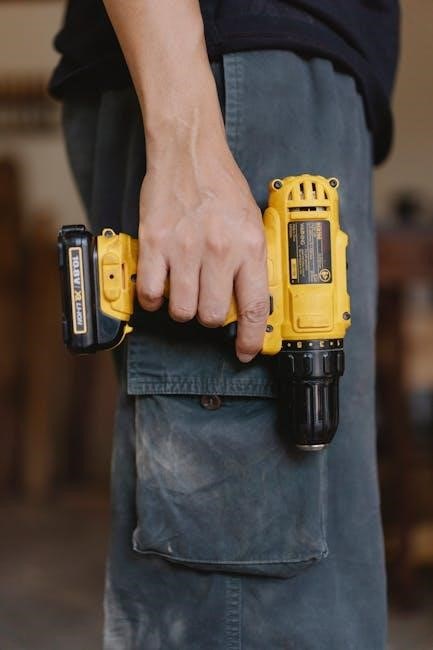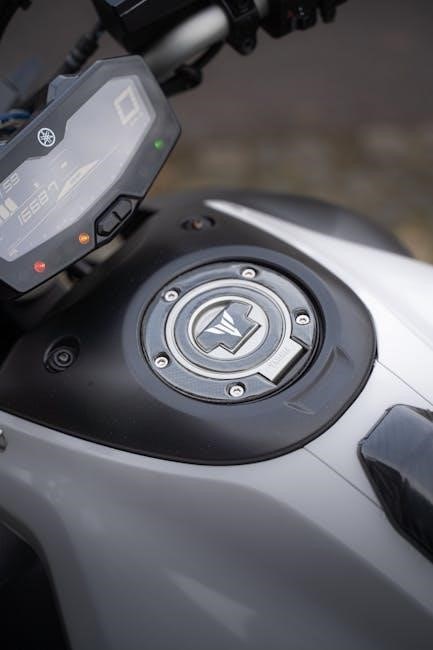2008 Honda Pilot Owners Manual: A Comprehensive Guide
This comprehensive guide details the 2008 Honda Pilot, offering 329 pages in PDF format, covering safety, operation, maintenance, and troubleshooting – a vital resource for owners!
Access detailed instructions for servicing your vehicle correctly and safely, including suspension and TPMS information, ensuring optimal performance and longevity of your 2008 Pilot.
Explore the manual’s insights into vehicle characteristics and operational advice, specifically tailored for the 2008 Honda Pilot, enhancing your driving experience and vehicle understanding.
Welcome to the world of the 2008 Honda Pilot! This vehicle represents Honda’s commitment to providing a versatile and reliable SUV, designed for families and adventurers alike. This owner’s manual serves as your primary resource for understanding all aspects of your new vehicle, ensuring a safe and enjoyable driving experience.
Within these pages, you’ll discover detailed information about the Pilot’s features, controls, and operation. We’ve compiled essential guidance on everything from basic driving techniques to advanced system functionalities. This manual is structured to be user-friendly, allowing you to quickly locate the information you need, whether you’re a first-time Honda owner or a seasoned enthusiast.
Remember, familiarizing yourself with this manual is crucial for maximizing your vehicle’s potential and maintaining its long-term performance. It’s a 329-page PDF resource, offering comprehensive insights into your 2008 Honda Pilot.
Understanding Your Vehicle’s Manual
This owner’s manual is more than just a collection of pages; it’s a vital tool for responsible vehicle ownership. It’s designed to help you understand your 2008 Honda Pilot’s features, operation, and maintenance requirements, ensuring both your safety and the longevity of your vehicle. The 329-page PDF format provides comprehensive access to crucial information.
Pay close attention to the symbols and cautions throughout the manual. These are strategically placed to alert you to potential hazards and provide guidance on safe operating procedures. Understanding these warnings is paramount to preventing damage to your vehicle and avoiding potential injuries.
Remember, the manual contains detailed instructions for servicing your vehicle correctly, including suspension and TPMS. Regular review will enhance your driving experience and vehicle understanding, maximizing its potential.
Safety Precautions and Warnings
Your 2008 Honda Pilot’s safety features are designed to protect you and your passengers, but their effectiveness relies on understanding and following the precautions outlined in this manual. Always prioritize safety by adhering to all warnings and instructions provided.
The manual utilizes specific symbols to highlight critical safety information. These symbols precede explanations of potential hazards and offer guidance on minimizing risks. Familiarize yourself with these symbols to quickly identify and address potentially dangerous situations.

Ignoring safety warnings can lead to vehicle damage, personal injury, or even fatalities. Properly understanding and implementing these precautions is essential for responsible vehicle operation and ensuring a safe driving experience in your 2008 Honda Pilot.
Important Safety Information
This section details crucial safety information for your 2008 Honda Pilot, emphasizing the importance of reading and understanding the entire owner’s manual before operating the vehicle. Prioritize familiarization with all safety features and operational procedures.
Pay close attention to information preceded by caution symbols, as these indicate potential hazards that could result in vehicle damage, injury, or even death. These warnings are designed to help you avoid dangerous situations.
Always ensure all passengers are properly restrained with seatbelts, and adhere to all child safety seat guidelines. Safe driving practices, combined with a thorough understanding of this manual, are paramount for a secure driving experience in your 2008 Honda Pilot.
Understanding Warning Symbols
The 2008 Honda Pilot utilizes a variety of warning symbols to communicate critical information regarding your vehicle’s operation and safety. Recognizing these symbols is essential for proactive vehicle maintenance and preventing potential issues.
Symbols are categorized by severity, ranging from cautionary alerts to critical warnings requiring immediate attention. Familiarize yourself with the meaning of each symbol displayed on the dashboard and within the owner’s manual.
Ignoring a warning symbol can lead to vehicle damage or a safety hazard. Consult the manual for a comprehensive explanation of each symbol, ensuring you understand the necessary actions to take when a warning illuminates. Prompt attention to these signals guarantees a safer driving experience.

Vehicle Overview & Key Features
The 2008 Honda Pilot boasts a spacious interior, robust engine, and versatile features, detailed within the owner’s manual for optimal understanding and enjoyment.
Exterior Features

The 2008 Honda Pilot’s exterior is characterized by its robust and functional design, detailed within the owner’s manual. Key features include body-colored side mirrors and door handles, contributing to a cohesive aesthetic. The vehicle incorporates halogen headlights for optimal visibility, and a rear window wiper ensures clear vision in various weather conditions.
The manual further explains the operation of exterior lighting, including headlights, taillights, and turn signals. Alloy wheels are standard on many trims, enhancing the vehicle’s appearance. The power moonroof, available on select models, adds an open-air experience. Understanding these features, as outlined in the manual, ensures proper usage and maintenance, maximizing the Pilot’s exterior appeal and functionality.
Detailed diagrams within the manual illustrate the location of all exterior components, aiding in identification and care.
Interior Features and Controls
The 2008 Honda Pilot’s interior, as detailed in the owner’s manual, prioritizes comfort and functionality. Features include comfortable seating for up to eight passengers, depending on the configuration. The manual explains the operation of the air conditioning system, including climate controls and ventilation settings, ensuring passenger comfort. Power windows and door locks are standard, enhancing convenience.
The audio system, controlled via steering wheel-mounted buttons, provides entertainment options. The manual illustrates the location and operation of all interior controls, including the gear selector and parking brake. Multiple storage compartments throughout the cabin offer ample space for belongings. Understanding these features, as outlined in the manual, optimizes the driving experience and ensures proper use of the Pilot’s interior amenities.
Detailed diagrams showcase the location of each control for easy reference.
Dashboard Indicators and Warnings
The 2008 Honda Pilot’s dashboard features a comprehensive array of indicators and warning lights, thoroughly explained in the owner’s manual; These indicators provide crucial information about the vehicle’s status, alerting the driver to potential issues. The manual details the meaning of each symbol, categorizing them by severity – from informational lights to critical warnings requiring immediate attention.
Key indicators include the check engine light, oil pressure warning, battery warning, and brake system warning. Understanding these symbols is vital for safe operation. The manual emphasizes that ignoring warning lights can lead to vehicle damage or safety hazards. It also explains temporary and persistent warning behaviors, guiding drivers on appropriate responses. As the manual states, information preceded by a symbol is intended to help avoid damage.
Refer to the manual for a complete list and detailed explanations.
Operating Your 2008 Honda Pilot
This section details starting, stopping, driving modes, and fueling procedures for your 2008 Pilot, ensuring safe and efficient operation as outlined in the manual.
Starting and Stopping the Engine
Before starting your 2008 Honda Pilot, ensure the parking brake is engaged and the transmission is in Park (P). Insert the key into the ignition and turn it to the “II” position – all indicator lights will illuminate. Then, turn the key further to the “START” position and release it once the engine starts. Avoid prolonged cranking to prevent starter damage.
To stop the engine, simply turn the key to the “LOCK” position. This will cut off the ignition and allow you to remove the key. Always ensure the vehicle is completely stopped before shifting into Park (P) or Neutral (N). Remember to engage the parking brake after stopping, especially on inclines. Refer to the owner’s manual for detailed instructions and safety precautions regarding engine operation.
Proper engine starting and stopping procedures contribute to the longevity and reliable performance of your 2008 Honda Pilot, as detailed within the comprehensive owner’s manual.
Driving Modes and Transmission
The 2008 Honda Pilot features a five-speed automatic transmission designed for smooth and efficient operation. It typically operates in Drive (D) for normal driving conditions. For enhanced engine braking or descending steep hills, utilize the lower gears – 3, 2, or 1 – by manually shifting the gear selector.
The transmission also includes a Sport Mode, offering more responsive shifting and increased engine power for a more dynamic driving experience. Be mindful of fuel consumption when using Sport Mode. The owner’s manual provides detailed explanations of each driving mode and its appropriate applications.
Understanding these modes and utilizing them correctly will optimize your 2008 Honda Pilot’s performance, fuel efficiency, and overall driving enjoyment, as outlined in the comprehensive owner’s manual.
Fueling and Fluid Checks
The 2008 Honda Pilot requires unleaded gasoline with an octane rating of 87 or higher. The fuel tank capacity is approximately 21.1 gallons. Regularly check fluid levels, including engine oil, coolant, brake fluid, power steering fluid, and windshield washer fluid, as detailed in the owner’s manual.
Locate the dipsticks and reservoir caps, typically marked with distinct colors and symbols. Ensure the vehicle is parked on a level surface when checking fluid levels. Refer to the manual for specific fluid specifications and capacities. Proper fluid maintenance is crucial for optimal performance and longevity.
Consistent monitoring and topping off of fluids, as described in the comprehensive guide, will help prevent potential issues and ensure your 2008 Honda Pilot operates reliably.

Maintenance Schedule & Procedures
Follow the recommended maintenance intervals outlined in the 2008 Honda Pilot’s manual, covering fluid specifications, DIY tasks, and essential checks for optimal performance.
Recommended Maintenance Intervals
Maintaining your 2008 Honda Pilot requires adherence to a specific schedule, detailed within the owner’s manual, to ensure longevity and reliability. Key intervals include oil and filter changes every 5,000 to 7,500 miles, depending on driving conditions.
Air filter inspections should occur every 15,000 miles, with replacement as needed, while coolant flushes are recommended every 30,000 miles; Brake fluid should be inspected annually and replaced every three years.
Spark plugs typically require replacement around 100,000 miles. Tire rotations are crucial every 5,000 miles to promote even wear, and a thorough inspection of all fluids, belts, and hoses should be performed during each oil change. Following these intervals, as per the manual, will help prevent costly repairs and maintain peak performance.
Fluid Specifications and Capacities
Your 2008 Honda Pilot requires specific fluids to operate optimally. Engine oil should be API certified, grade 5W-20, with a capacity of 5.1 quarts. The cooling system utilizes Honda Long Life Antifreeze/Coolant Type 2, needing approximately 1.6 gallons.
Automatic transmission fluid, Honda ATF-DW1, requires around 9.5 quarts for a complete change. Power steering fluid should meet Honda Power Steering Fluid specification, with a capacity of roughly 1.6 quarts.
Brake fluid must be DOT 3 or DOT 4, and the rear differential requires 2.3 quarts of SAE 75W-90 gear oil. Always consult the owner’s manual for precise specifications and capacities, as variations may exist. Using the correct fluids is crucial for preventing damage and ensuring proper vehicle function.
DIY Maintenance Tasks
Several maintenance tasks on your 2008 Honda Pilot can be performed by owners. Regularly checking and topping off fluids – oil, coolant, brake, power steering, and windshield washer fluid – is essential. Inspecting tire pressure and tread depth monthly contributes to safety and fuel efficiency.
Air filter replacement is straightforward, typically every 15,000-30,000 miles. Replacing windshield wiper blades when streaking occurs ensures clear visibility. Battery terminal cleaning prevents corrosion and maintains a strong connection.
Always refer to the owner’s manual for specific procedures and intervals. Remember safety first – disconnect the battery when working on the electrical system and properly dispose of used fluids. These tasks help maintain your Pilot’s reliability and performance.
Checking and Replacing Fluids (Oil, Coolant, Brake Fluid)
Regularly checking fluid levels is crucial for your 2008 Honda Pilot’s health. Engine oil should be checked weekly with the dipstick, replenishing as needed with the specified grade. Coolant levels, visible in the reservoir, should be maintained between minimum and maximum marks – never open the radiator cap when hot!
Brake fluid levels, found in the master cylinder, indicate potential brake system issues if consistently low. Replacement intervals vary, but typically occur every 30,000 miles or three years. Always use the correct fluid type as specified in the owner’s manual;
Proper disposal of used fluids is vital for environmental responsibility. Consult local regulations for appropriate recycling or disposal methods. Following these steps ensures optimal performance and longevity.
Tire Maintenance (Pressure, Rotation, Replacement)
Maintaining proper tire pressure is paramount for safety and fuel efficiency in your 2008 Honda Pilot. Check pressure monthly using a reliable gauge, inflating to the PSI listed on the driver’s side doorjamb – not the tire sidewall.
Regular tire rotation, typically every 5,000-7,500 miles, promotes even wear, extending tire life. A common pattern is front-to-back, but consult your owner’s manual for specifics. Inspect tires for uneven wear, bulges, or cuts.
Tire replacement is necessary when tread depth reaches 2/32 of an inch, indicated by wear bars. Replace tires in pairs or all four for balanced handling. Always use tires with the correct load rating and speed symbol.

Troubleshooting Common Issues
This section provides general guidance for diagnosing charging, starter, and engine problems in your 2008 Honda Pilot, aiding quick issue identification.
Charging System and Starter Problems
Diagnosing issues within the 2008 Honda Pilot’s charging and starting systems requires a systematic approach. Common problems include a failing alternator, a discharged or weak battery, loose or corroded connections, and a faulty starter motor.
Initial checks should focus on the battery voltage and the condition of the battery terminals. A voltmeter can quickly reveal if the battery is holding a charge; Inspect the alternator’s wiring and connections for damage or corrosion, as these can impede charging efficiency.
If the engine cranks slowly or not at all, the starter motor or its solenoid may be at fault. Testing the starter’s functionality often involves checking for power at the solenoid and verifying its engagement with the flywheel. Remember to consult the detailed wiring diagrams within the owner’s manual for accurate troubleshooting.
Addressing these issues promptly prevents further damage and ensures reliable vehicle operation.
Engine Performance Issues
Addressing engine performance concerns in your 2008 Honda Pilot begins with identifying the symptoms. Common issues include reduced power, rough idling, misfires, and unusual noises. These can stem from various sources, including faulty spark plugs, clogged fuel injectors, a malfunctioning mass airflow sensor, or issues with the ignition system.
Regular maintenance, as outlined in the owner’s manual, is crucial for preventing these problems. Checking and replacing air filters, fuel filters, and spark plugs at recommended intervals ensures optimal engine function.
Diagnostic tools, such as an OBD-II scanner, can help pinpoint the source of the problem by retrieving error codes. These codes provide valuable clues for targeted repairs. Always refer to the manual for specific diagnostic procedures and component locations.

Prompt attention to engine performance issues prevents more significant and costly repairs.
Brake System Troubleshooting
Addressing brake system issues in your 2008 Honda Pilot requires careful attention to safety. Common problems include spongy brake pedal feel, squealing or grinding noises, pulling to one side during braking, and increased stopping distances. These symptoms indicate potential problems with brake pads, rotors, calipers, or the brake fluid system.
Regular inspection of brake components, as detailed in the owner’s manual, is vital. Check brake pad thickness, rotor condition, and brake fluid levels. Low brake fluid can indicate a leak in the system.
Proper bleeding of the brake lines is essential after any brake system repair to remove air bubbles. Always follow the manual’s instructions for bleeding procedures. Ignoring brake issues compromises safety.
Seek professional assistance if you are uncomfortable performing brake repairs.

Detailed System Information
Explore in-depth details regarding the 2008 Honda Pilot’s suspension, transmission, and electrical systems, providing a comprehensive understanding of vehicle mechanics and functionality.
Suspension System Overview
The 2008 Honda Pilot’s suspension system is meticulously engineered for a comfortable and controlled ride, incorporating independent MacPherson strut front suspension and a multi-link rear setup. This configuration optimizes handling, stability, and passenger comfort across various terrains.
Key components include shock absorbers, coil springs, stabilizer bars, and control arms, all working in harmony to absorb road impacts and minimize body roll. Understanding the system’s intricacies, as detailed in the owner’s manual and service manual, is crucial for proper maintenance and troubleshooting.
Furthermore, the system integrates with the Tire Pressure Monitoring System (TPMS), enhancing safety by alerting drivers to low tire pressure, which directly impacts suspension performance and handling characteristics. Regular inspection and maintenance, guided by the manual, ensure optimal suspension functionality and longevity.
Transmission System Details
The 2008 Honda Pilot features a robust 5-speed automatic transmission, designed for smooth and efficient power delivery. This transmission utilizes advanced torque converter technology and electronically controlled shifting for optimal performance and fuel economy.
Detailed within the owner’s manual and shop manual are specifics regarding fluid types, capacities, and recommended maintenance intervals. Proper fluid levels and regular fluid changes are critical for preventing premature wear and ensuring reliable operation of the transmission system.
Understanding the transmission’s operating principles, including driving modes and shift patterns, allows owners to maximize efficiency and responsiveness. The manual provides guidance on recognizing potential issues and performing basic troubleshooting steps, contributing to the longevity of this vital component.
Electrical System Basics
The 2008 Honda Pilot’s electrical system is a complex network powering various components, from the engine and lights to infotainment and safety features. The owner’s manual details the system’s core elements, including the battery, alternator, starter, and wiring harnesses.
Understanding the function of key components, like fuses and relays, is crucial for addressing minor electrical issues. The manual provides fuse box diagrams and guidance on replacing blown fuses, ensuring safe and effective repairs.

Troubleshooting common electrical problems, such as charging system malfunctions or starter issues, is also covered. The manual emphasizes the importance of professional diagnosis and repair for complex electrical concerns, prioritizing safety and preventing further damage to the vehicle’s intricate system.

Warranty Information & Support
Explore Honda Pilot warranty details, locate nearby service centers, and access dedicated customer support for your 2008 model – ensuring peace of mind!
Honda Pilot Warranty Details
Understanding your 2008 Honda Pilot’s original warranty coverage is crucial, though time has likely passed since the initial terms. Typically, new Honda vehicles came with a 3-year/36,000-mile bumper-to-bumper warranty, and a 5-year/60,000-mile powertrain warranty.
However, these warranties are generally transferable, but their validity depends on the vehicle’s history and current mileage.
Check your original purchase documents or contact a Honda dealership to ascertain if any remaining factory warranty coverage applies.
Extended warranties or Vehicle Service Contracts (VSCs) may have been purchased by the original owner or subsequent owners, providing continued protection.
Review any VSC documentation carefully to understand the coverage terms, deductibles, and claim procedures.
Always retain records of all maintenance and repairs, as they may be required when filing a warranty claim.
Contacting Honda Customer Support
For assistance with your 2008 Honda Pilot, Honda provides several avenues for customer support. You can reach Honda Customer Service directly by phone at 1-800-337-1245. Their representatives can address general inquiries, warranty questions, and roadside assistance needs.
Alternatively, explore the comprehensive support resources available on the official Honda website: https://www.honda.com/. This site offers FAQs, owner’s manuals (including potentially a digital version for your 2008 Pilot), and a service locator tool.
To locate an authorized Honda service center near you, utilize the dealer locator on the Honda website.
For specific technical support or recall information, you can also submit an online inquiry through the Honda website.
Keep your Vehicle Identification Number (VIN) handy when contacting support, as it will expedite the assistance process.
Locating a Service Center
Finding a qualified service center for your 2008 Honda Pilot is crucial for maintaining its performance and reliability. Honda provides a convenient online dealer locator tool on their official website: https://www.honda.com/. This tool allows you to search for authorized Honda service centers based on your zip code or city.
The locator displays a map with nearby dealerships, along with their contact information, hours of operation, and available services.
When choosing a service center, prioritize those with certified Honda technicians who have specialized training in servicing Honda vehicles, including your 2008 Pilot.
Consider checking online reviews and ratings to gauge the quality of service provided by different dealerships.
Regular maintenance performed by a qualified Honda service center will help ensure your Pilot remains in optimal condition for years to come.











































































